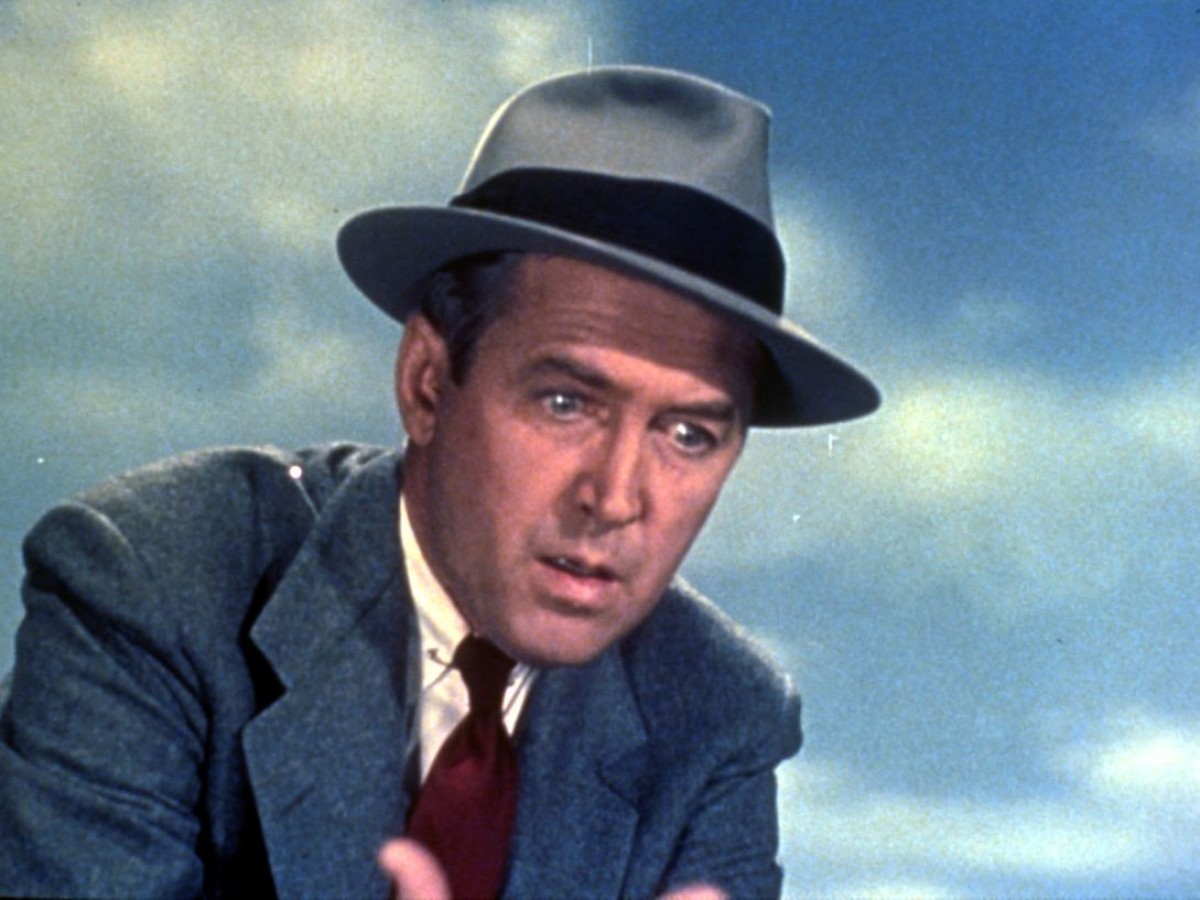Henry Fonda & James Stewart
Carte Blanche for Alexander Horwath
December 7, 2024 to January 6, 2025
The premiere at the Film Museum of Henry Fonda for President gave us a reason for us to ask Alexander Horwath to select some films providing a deeper dive into the "Fonda Universe." In the end, we have decided on double features inspired by Scott Eyman's 2017 biography Hank & Jim. The series focuses on the similarities and differences between lifelong friends Henry "Hank" Fonda and James "Jim" Stewart: Two stars and cultural icons of Hollywood cinema who, as a Eyman writes, "embodied the geographic and cultural heart of America." (Michael Loebenstein)
Alexander Horwath: "In many a gentle, good-natured, sentimental 'American Dream,' mid-20th century America resembled a pleasant small town in which Stewart and Fonda lived with their families in modest but cozy neighboring homes. The pair's private, lifelong friendship, which was never damaged by their contrary political convictions ('we agreed to disagree'), acts like a consolidation of this dream. But anyone, like the writer Norman Mailer at the time, who recognizes in the dream life of their country 'a subterranean river of untapped, ferocious lonely and romantic desires,' a 'concentration of ecstasy and violence,' arrives at different dream images. Fonda and Stewart also inhabit this world of images – so long as one is prepared to step away from the traditional character templates of the 'upright Americans Hank & Jim.'
The seven film pairings I've proposed at the Film Museum's invitation do not consist of 'rarities,' but rather canonical works: They are 14 sites in which gentleness, good-naturedness, heroism, and utopia meet loneliness, clumsiness, neuroticism, and violence – in comedies and historical re-enactments, thrillers and contemporary interrogations of the rule of state law and political work in Washington. These seven filmic parallels express both similarities in the careers of the two stars as well as differences in their acting styles and the respective 'personas' they created.
The link connecting the films is easy to make out and obvious. For example, significant synchronisms – like that found in 1940 between poverty and labor migration in The Grapes of Wrath and the life of the rich and beautiful in The Philadelphia Story (against all expectations that year's Oscar was not won by Fonda for the first film, but by Stewart for the latter). Another link are directors who were greatly important for both actors: John Ford and Alfred Hitchcock. Besides, these film pairings reveal a few of the fundamental questions and answers which classic Hollywood cinema offered its mass audience between the 1930s and 1960s. Fonda and Stewart themselves fulfilled double roles here: They needed to find a form for the general (the social and ideological demands of the 'Zeitgeist' which popular culture can never wholly escape) – and at the same time for the individual, the obstinate, which managed to immunize itself and us against overly simplified, sentimental solutions. History and stubbornness." (Translation: Ted Fendt)
The premiere at the Film Museum of Henry Fonda for President gave us a reason for us to ask Alexander Horwath to select some films providing a deeper dive into the "Fonda Universe." In the end, we have decided on double features inspired by Scott Eyman's 2017 biography Hank & Jim. The series focuses on the similarities and differences between lifelong friends Henry "Hank" Fonda and James "Jim" Stewart: Two stars and cultural icons of Hollywood cinema who, as a Eyman writes, "embodied the geographic and cultural heart of America." (Michael Loebenstein)
Alexander Horwath: "In many a gentle, good-natured, sentimental 'American Dream,' mid-20th century America resembled a pleasant small town in which Stewart and Fonda lived with their families in modest but cozy neighboring homes. The pair's private, lifelong friendship, which was never damaged by their contrary political convictions ('we agreed to disagree'), acts like a consolidation of this dream. But anyone, like the writer Norman Mailer at the time, who recognizes in the dream life of their country 'a subterranean river of untapped, ferocious lonely and romantic desires,' a 'concentration of ecstasy and violence,' arrives at different dream images. Fonda and Stewart also inhabit this world of images – so long as one is prepared to step away from the traditional character templates of the 'upright Americans Hank & Jim.'
The seven film pairings I've proposed at the Film Museum's invitation do not consist of 'rarities,' but rather canonical works: They are 14 sites in which gentleness, good-naturedness, heroism, and utopia meet loneliness, clumsiness, neuroticism, and violence – in comedies and historical re-enactments, thrillers and contemporary interrogations of the rule of state law and political work in Washington. These seven filmic parallels express both similarities in the careers of the two stars as well as differences in their acting styles and the respective 'personas' they created.
The link connecting the films is easy to make out and obvious. For example, significant synchronisms – like that found in 1940 between poverty and labor migration in The Grapes of Wrath and the life of the rich and beautiful in The Philadelphia Story (against all expectations that year's Oscar was not won by Fonda for the first film, but by Stewart for the latter). Another link are directors who were greatly important for both actors: John Ford and Alfred Hitchcock. Besides, these film pairings reveal a few of the fundamental questions and answers which classic Hollywood cinema offered its mass audience between the 1930s and 1960s. Fonda and Stewart themselves fulfilled double roles here: They needed to find a form for the general (the social and ideological demands of the 'Zeitgeist' which popular culture can never wholly escape) – and at the same time for the individual, the obstinate, which managed to immunize itself and us against overly simplified, sentimental solutions. History and stubbornness." (Translation: Ted Fendt)
Related materials
Program Premiere - December 2024



